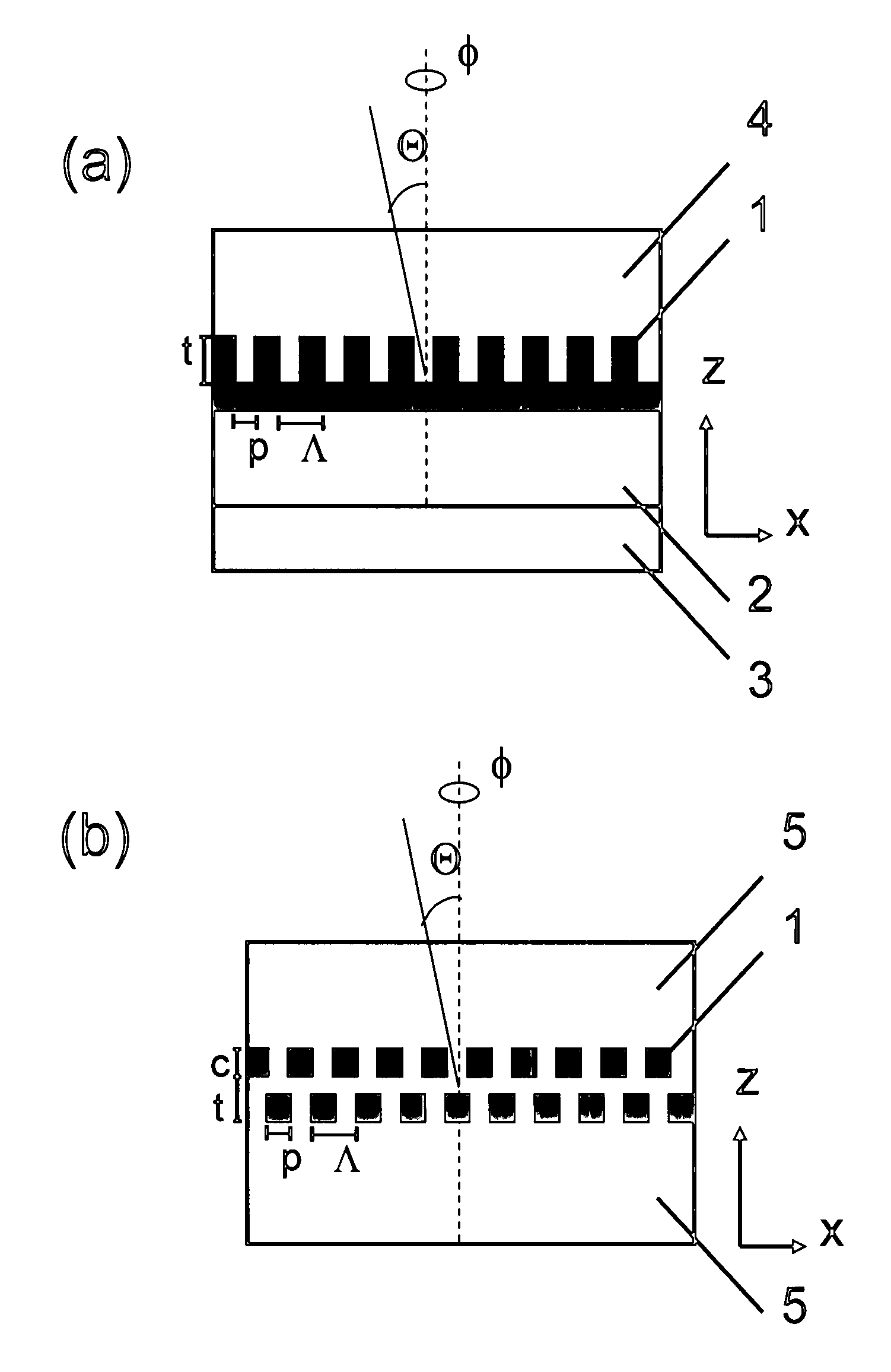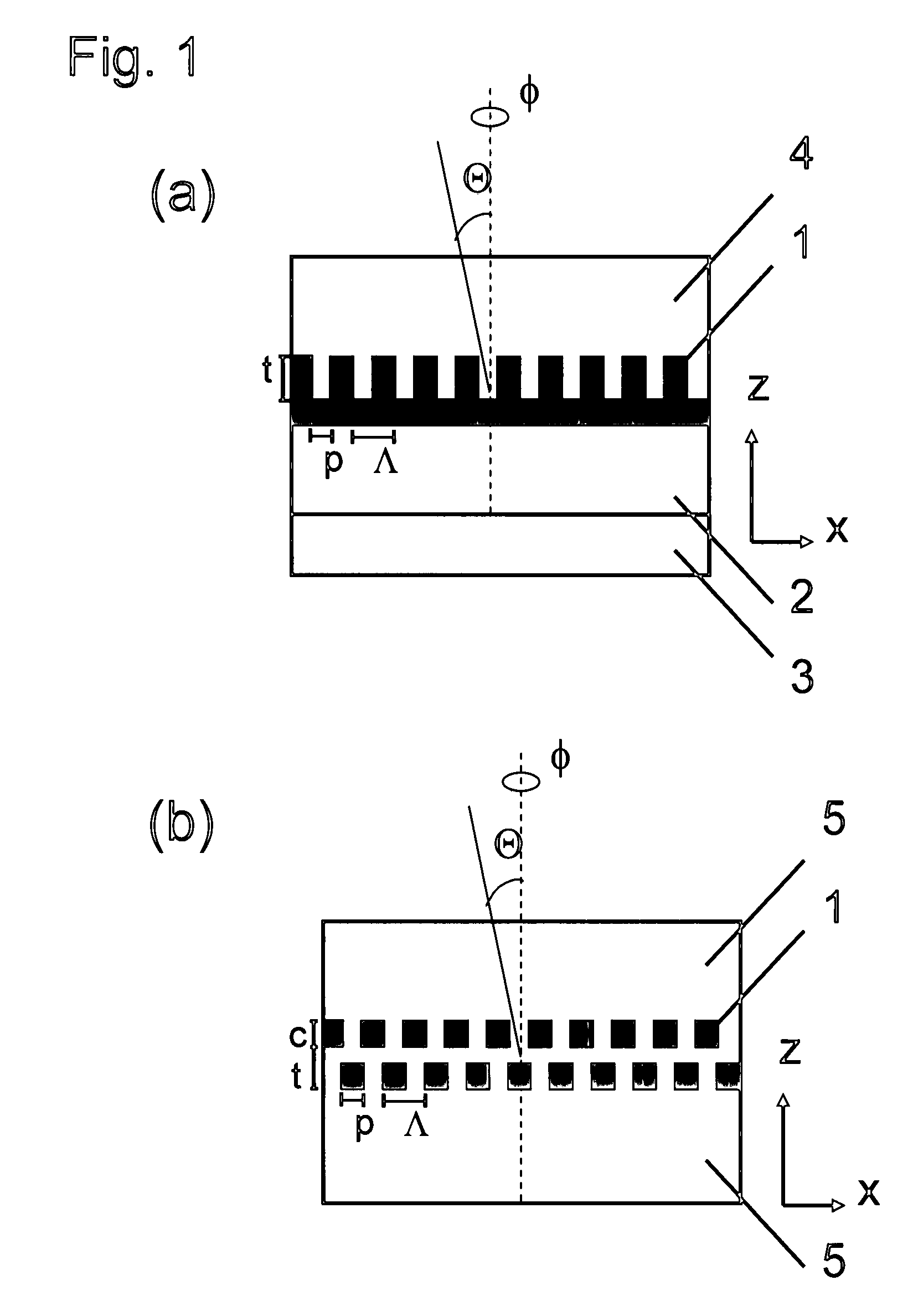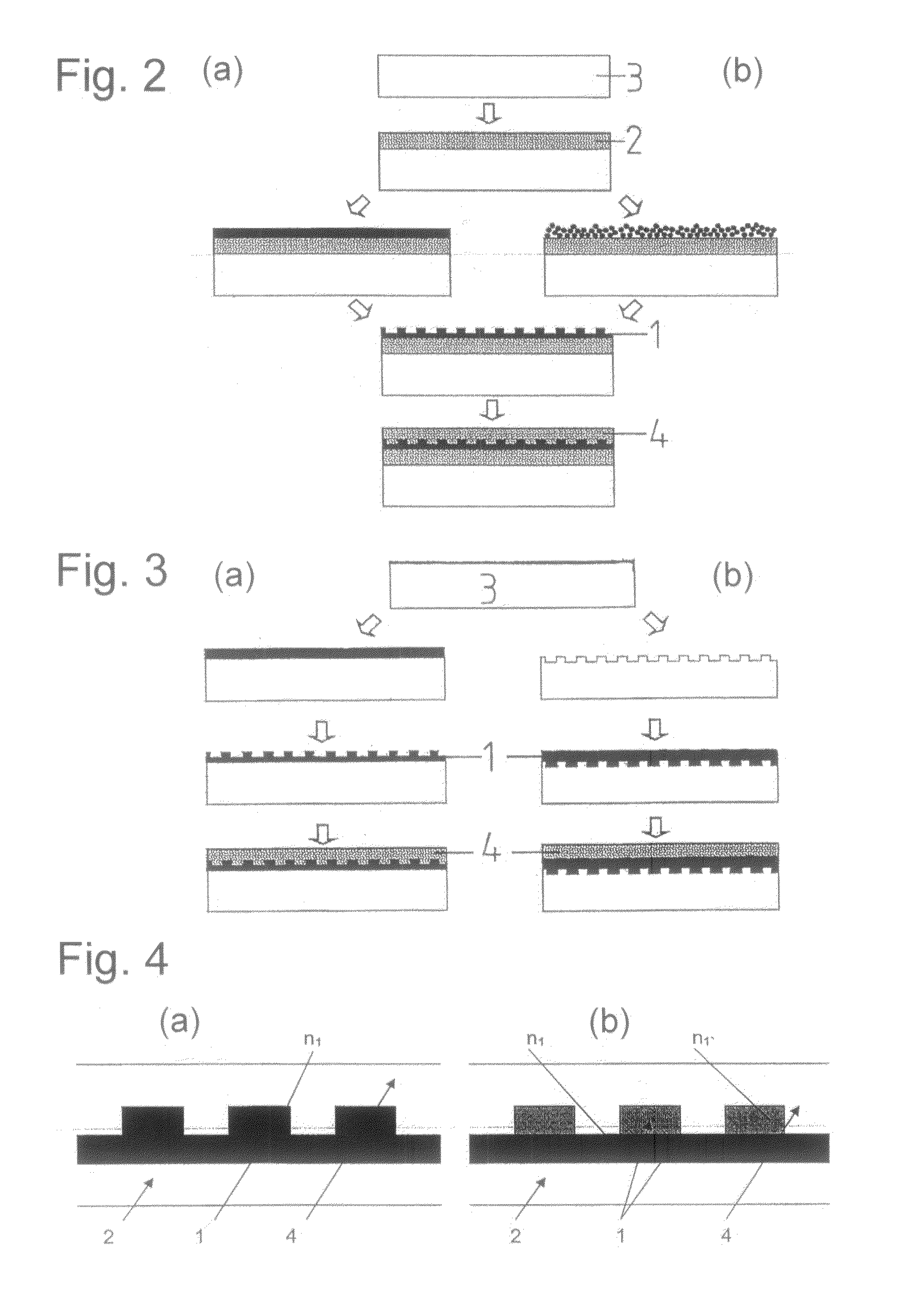Zero-order diffractive filter
a filter and filter filter technology, applied in the field of zero-order diffractive filters, can solve the problems of visible zero-order color effects, and achieve the effect of reducing optical scattering and high index
- Summary
- Abstract
- Description
- Claims
- Application Information
AI Technical Summary
Benefits of technology
Problems solved by technology
Method used
Image
Examples
example 2
[0111]A first layer was deposited by curtain coating on a transparent PET substrate with a thickness of about 200 μm. The employed solution had a composition as described in table 4. The surface modified SiO2 is obtained according to example 1 of EP 1655348. Next, a second layer including polymer particles was curtain coated in a second coating step from a solution according to table 5. All coating steps took place in a continuous roll-to-roll process using a curtain coating machine. Next, a linear grating structure with a period of 1050 nm, a grating depth of 200 nm and a rectangular grating profile was hot embossed in the second layer at 80° C. Viewed at an angle of Θ=50° the obtained ZOF shows a pronounced color change upon rotation by 90°.
[0112]
TABLE 4First layer (Low refractive index, porous)componentamount [g / m2]Surface modified SiO221.052Polyvinyl alcohol, Mowiol 40-88, Omya4.928AG, SwitzerlandHardener, Boric acid, Schweizerhalle0.8Chemie AG, Switzerlandtotal (solid)26.78Wate...
PUM
 Login to View More
Login to View More Abstract
Description
Claims
Application Information
 Login to View More
Login to View More - R&D
- Intellectual Property
- Life Sciences
- Materials
- Tech Scout
- Unparalleled Data Quality
- Higher Quality Content
- 60% Fewer Hallucinations
Browse by: Latest US Patents, China's latest patents, Technical Efficacy Thesaurus, Application Domain, Technology Topic, Popular Technical Reports.
© 2025 PatSnap. All rights reserved.Legal|Privacy policy|Modern Slavery Act Transparency Statement|Sitemap|About US| Contact US: help@patsnap.com



